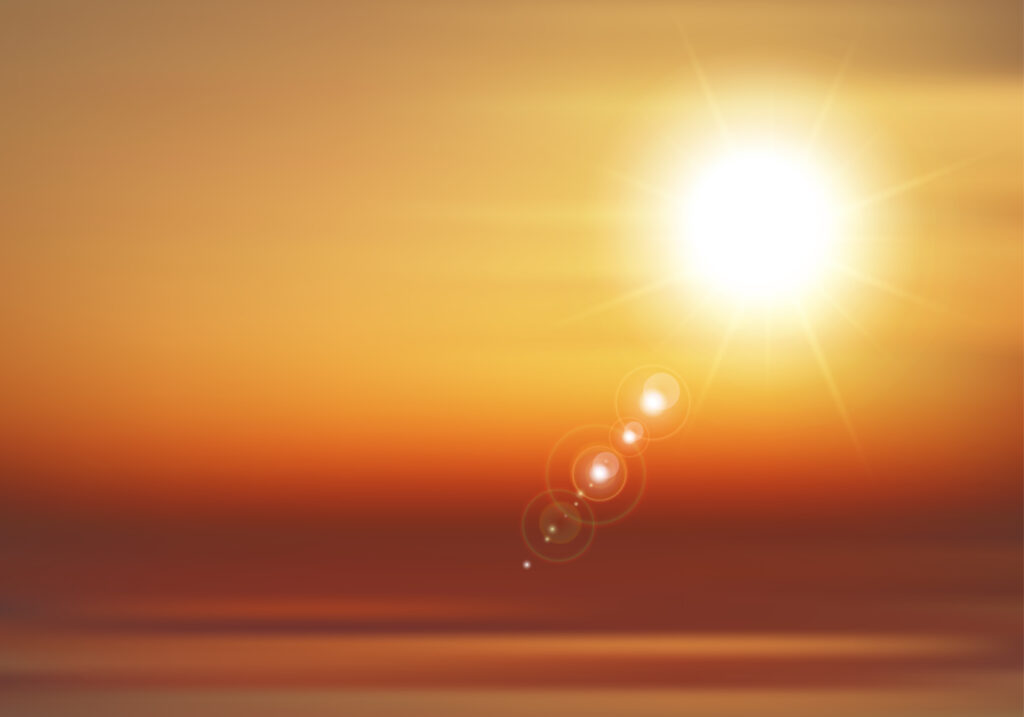Living in a clutter-free environment isn’t just about having an organized home—it’s about simplifying your life, reducing stress, and creating space for things that truly matter. Clutter can accumulate in many areas of life, from your physical space to your mental well-being. This guide will take you through 20 practical sections designed to help you declutter your life, step by step.
1. Why Decluttering Your Life Matters
Living a clutter-free life goes beyond a tidy home. Clutter can have a profound impact on your mental health, productivity, and overall happiness. When you’re surrounded by chaos, it’s easy to feel overwhelmed and stressed.
Subsection 1: The Psychological Effects of Clutter
Clutter isn’t just about disorganization; it creates a sense of unfinished tasks and constant distractions. Studies show that living in a cluttered space increases cortisol levels, which can contribute to anxiety and depression.
Subsection 2: The Benefits of a Clutter-Free Life
On the flip side, decluttering can provide mental clarity, reduce stress, and create an environment that fosters creativity and productivity. Living clutter-free allows you to focus on what matters most.
2. Where to Start Decluttering: Setting Goals
Decluttering can feel like a daunting task, but it’s important to start small and have clear goals in mind. Where do you need the most help? Which area of your life is most affected by clutter?
Subsection 1: Identifying Your Clutter Hotspots
Start by identifying the areas in your life that feel the most cluttered. Is it your physical space, like your kitchen or bedroom? Or is it digital clutter—your overflowing inbox or chaotic computer files?
Subsection 2: Setting Realistic Decluttering Goals
Once you’ve identified where the clutter resides, set achievable goals. It’s essential to take it one step at a time rather than attempting to declutter your entire life in one weekend.
Key Point 1:
Setting realistic goals is essential in the decluttering process. Focus on small, manageable tasks to avoid overwhelm.
3. Decluttering Your Physical Space: Room by Room
The most obvious form of clutter is physical. Whether it’s overflowing closets, cluttered countertops, or piles of paperwork, these physical distractions can impede your productivity and peace of mind.
Subsection 1: Decluttering Your Bedroom
Your bedroom should be a sanctuary for relaxation, not a dumping ground for clothes, books, and random objects. Start by organizing your closet, decluttering your nightstand, and clearing the floors.
Subsection 2: Organizing the Kitchen
Kitchens tend to accumulate clutter faster than any other room in the house. Declutter your pantry, fridge, and cabinets by throwing out expired items, donating unused appliances, and implementing efficient storage solutions.
4. Embracing Minimalism: The Key to Staying Clutter-Free
Minimalism is a lifestyle choice that focuses on keeping only the essentials and letting go of the rest. It’s a powerful tool for achieving a clutter-free life because it promotes intentional living and helps you appreciate what you have.
Subsection 1: Understanding Minimalism
Minimalism isn’t about depriving yourself. It’s about choosing quality over quantity and focusing on things that add value to your life. The less you have, the easier it is to maintain a clutter-free environment.
Subsection 2: How to Incorporate Minimalism into Daily Life
Start small by decluttering one category of items at a time. Whether it’s your wardrobe, gadgets, or kitchen tools, ask yourself: Do I really need this? Does it bring me joy?
5. Letting Go of Sentimental Clutter
Sentimental items can be some of the hardest things to declutter. While it’s important to hold onto memories, it’s also crucial to avoid letting objects weigh you down.
Subsection 1: The Emotional Attachment to Things
Sentimental items often carry emotional weight. However, it’s essential to recognize that memories live within you, not in objects. Keeping too many sentimental items can lead to clutter.
Subsection 2: How to Declutter Sentimental Items
Start by sorting through your sentimental items. Keep a few meaningful things, but be mindful not to hold onto everything. Consider donating, repurposing, or digitizing photos and mementos to save space.
Key Point 2:
Letting go of sentimental clutter is challenging but necessary for maintaining a clutter-free life. Focus on preserving memories rather than physical objects.
6. Digital Declutter: Clearing Your Virtual Space
Clutter isn’t just physical—it can also exist in your digital life. From endless emails to files stored haphazardly on your computer, digital clutter can slow down your productivity and create unnecessary stress.
Subsection 1: Managing Your Inbox
An overflowing inbox is a source of daily stress. Start by unsubscribing from newsletters you no longer read and organizing your emails into folders for easy access.
Subsection 2: Organizing Files and Photos
Decluttering your computer files and photos can be time-consuming, but it’s worth it. Create a clear folder structure, delete duplicates, and back up important files to the cloud.
7. Decluttering Your Schedule: Time Management for a Clutter-Free Life
Living clutter-free isn’t just about organizing your stuff; it’s also about managing your time efficiently. A cluttered schedule can lead to stress, overwhelm, and a lack of focus.
Subsection 1: Prioritizing Your To-Do List
Start by reviewing your to-do list and identifying tasks that don’t align with your goals. Focus on high-priority tasks that move you forward and delegate or eliminate the rest.
Subsection 2: Creating a Simple Daily Routine
A well-structured routine can bring calm to your day. Keep your schedule simple by focusing on three major tasks and incorporating time for breaks and relaxation.
8. Decluttering Your Mind: Reducing Mental Clutter
Mental clutter can be just as overwhelming as physical clutter. Negative thoughts, worries, and constant distractions can make it hard to focus and stay productive.
Subsection 1: Practicing Mindfulness
Mindfulness is an effective way to clear mental clutter. By staying present in the moment, you can reduce overthinking and focus on what’s important.
Subsection 2: Journaling for Mental Clarity
Writing down your thoughts and feelings in a journal can help declutter your mind. It’s a way to organize your thoughts and gain perspective on what truly matters.
Key Point 3:
A clutter-free life includes decluttering your mind. Focus on mindfulness and journaling to clear mental clutter.
9. Decluttering Your Finances: Simplifying Your Money Management
Financial clutter is often overlooked, but it can add significant stress to your life. Simplifying your finances helps you stay on top of bills, avoid debt, and save for the future.
Subsection 1: Streamlining Your Bank Accounts and Bills
Keep your finances organized by consolidating accounts, automating payments, and using budgeting tools to track your spending.
Subsection 2: Decluttering Your Financial Documents
Create a system for storing financial documents. Go paperless when possible, and keep essential documents in a labeled folder or file system.
10. Social Media Declutter: Limiting Digital Distractions
Social media is a significant source of mental and digital clutter. Constant notifications, mindless scrolling, and comparison can drain your time and energy.
Subsection 1: Setting Boundaries for Social Media Use
Limit the time you spend on social media by setting boundaries. Use apps that track your screen time and set time limits for browsing.
Subsection 2: Unfollowing and Unsubscribing
Declutter your feed by unfollowing accounts that no longer serve you. Focus on content that inspires and uplifts rather than adds to the noise.
11. Decluttering Relationships: Letting Go of Toxic Connections
Relationships can bring joy and fulfillment, but they can also cause emotional clutter if they are toxic or draining. Decluttering your social life can free up mental space and reduce stress.
Subsection 1: Identifying Toxic Relationships
Recognize relationships that no longer add value to your life. Toxic relationships often involve negativity, manipulation, or a lack of support.
Subsection 2: Setting Boundaries
Setting clear boundaries with people who drain your energy is essential for maintaining a clutter-free life. Learn to say no without feeling guilty and prioritize relationships that bring positivity.
Key Point 4:
Decluttering your relationships is key to living clutter-free. Let go of toxic connections and surround yourself with positivity.
12. Decluttering Your Wardrobe: Simplify Your Clothing Choices
A cluttered closet can lead to decision fatigue and wasted time. Simplifying your wardrobe not only frees up physical space but also makes daily dressing easier.
Subsection 1: Creating a Capsule Wardrobe
A capsule wardrobe consists of versatile, high-quality pieces that you love and wear regularly. Declutter by donating or selling clothes you no longer wear.
Subsection 2: Organizing by Season
Rotate your wardrobe based on the season to keep things simple. Store off-season items in bins or vacuum-sealed bags to make more space in your closet.
13. Decluttering Your Diet: Simplifying Meal Planning
Just like your home and schedule, your diet can become cluttered with unhealthy choices and mindless eating. Simplifying your meals can lead to better health and more energy.
Subsection 1: Meal Planning for Success
Plan your meals in advance to avoid the chaos of last-minute decisions. Focus on whole, nutritious foods that fuel your body.
Subsection 2: Organizing Your Pantry
A cluttered pantry can lead to waste and poor meal choices. Declutter your pantry by tossing expired items and organizing the shelves so you can easily find what you need.
14. Creating Clutter-Free Habits: Maintaining Your Progress
Once you’ve decluttered, the key to living clutter-free is maintaining your progress. Establish habits that prevent clutter from creeping back into your life.
Subsection 1: The One-In, One-Out Rule
For every new item you bring into your home, let go of something else. This rule helps prevent future clutter and keeps your space balanced.
Subsection 2: Regular Decluttering Sessions
Set aside time for regular decluttering sessions. A monthly or quarterly check-in can help you stay on top of things and prevent clutter from building up.
Key Point 5:
Develop clutter-free habits like the one-in, one-out rule to maintain a clutter-free life over time.
15. Decluttering Family Spaces: Getting Everyone Involved
Living clutter-free is a family effort. Encourage your family to join the decluttering process, whether it’s organizing shared spaces or creating routines to keep things tidy.
Subsection 1: Decluttering with Kids
Teach children the value of a clutter-free space by involving them in the process. Start small by encouraging them to donate toys they no longer use.
Subsection 2: Creating Family Routines
Establish family routines that promote organization. Set daily chores and decluttering tasks to keep shared spaces clutter-free.
16. Decluttering Your Workspace: Boosting Productivity
A cluttered workspace can seriously hinder your productivity. Whether you work from home or in an office, a clean and organized desk helps you stay focused.
Subsection 1: Organizing Your Desk
Clear your desk of unnecessary items. Keep only essential tools within reach and create designated spaces for papers, pens, and gadgets.
Subsection 2: Going Paperless
Reduce physical clutter in your workspace by going digital. Store documents in the cloud and use apps for note-taking to keep your desk clutter-free.
17. Emotional Decluttering: Letting Go of Negative Emotions
Emotional clutter can be just as disruptive as physical clutter. Holding onto past grievances, guilt, or anger can weigh you down emotionally.
Subsection 1: Releasing Emotional Baggage
Identify emotions that no longer serve you and work on letting them go. This might involve therapy, journaling, or self-reflection.
Subsection 2: Practicing Gratitude
Focusing on gratitude can help you shift your mindset and let go of negative emotions. Make it a habit to list things you’re grateful for every day.
18. Decluttering Your Leisure Time: Making Room for What Matters
Our free time is often filled with activities that don’t align with our values or interests. Decluttering your leisure time allows you to focus on hobbies and activities that bring you joy.
Subsection 1: Evaluating Your Commitments
Review your leisure activities and see which ones genuinely bring you happiness. Eliminate obligations or hobbies that feel more like a chore than a source of joy.
Subsection 2: Scheduling Time for Hobbies
Once you’ve decluttered your leisure time, make space for hobbies and activities that you love. Schedule time for them, just as you would for work or chores.
19. Decluttering Your Goals: Focusing on What Truly Matters
Goal-setting is important, but having too many goals can lead to overwhelm and clutter. Decluttering your goals ensures that you’re focused on what truly matters to you.
Subsection 1: Identifying Your Top Priorities
Take time to reflect on your top priorities. Are your current goals aligned with them? If not, it might be time to let go of certain goals that no longer serve you.
Subsection 2: Simplifying Your Goal List
Reduce your goal list to a manageable number. Focus on two to three major goals at a time rather than spreading yourself thin.
20. The Joy of a Clutter-Free Life: Final Thoughts
Decluttering your life is a continuous journey, but the rewards are endless. A clutter-free life brings peace, clarity, and a sense of control over your environment.
Subsection 1: Enjoying the Simplicity of Living Clutter-Free
Living clutter-free allows you to focus on what’s truly important—whether that’s spending time with loved ones, pursuing passions, or simply enjoying a quiet moment in your organized home.
Subsection 2: Maintaining Your Clutter-Free Life
Keep practicing the habits you’ve built, and remember that decluttering is an ongoing process. Regular maintenance and mindful living are the keys to long-term success.
FAQs
- How do I start decluttering my life?
Begin by setting clear goals and tackling one small area at a time, such as your bedroom or desk. - What is the one-in, one-out rule?
For every new item you bring into your home, remove one to prevent future clutter. - How can I stay motivated to declutter?
Break the process into small tasks and celebrate your progress along the way. - What should I do with sentimental items?
Keep a few meaningful items, but let go of anything that doesn’t add value to your life. - Can decluttering improve mental health?
Yes, a clutter-free environment can reduce stress and promote mental clarity. - How do I declutter my digital space?
Organize files, delete duplicates, and use tools to manage your inbox. - What are the benefits of a capsule wardrobe?
A capsule wardrobe simplifies clothing choices, reduces decision fatigue, and helps you stay organized. - How often should I declutter?
Schedule regular decluttering sessions, whether monthly or quarterly, to maintain a clutter-free space. - How can I encourage my family to declutter?
Get everyone involved by setting family routines and making decluttering a group effort. - What is emotional decluttering?
Emotional decluttering involves letting go of negative emotions and focusing on gratitude.





